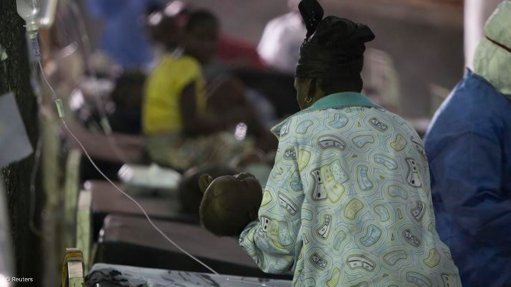
Photo by: Reuters
Recent research suggests that two thirds of deaths across the world are unrecorded. In addition, unrecorded deaths occur more frequently among disadvantaged people.
This raises important questions about the links between material and data poverty. And it has left researchers trying to understand how health authorities can interact with communities to improve these statistics.
Civil registration is the recording of births, deaths, marriages and divorces. The process of combining, analysing and reporting this data is known as vital statistics.
In many developing and transitional countries functioning civil registration and vital statistics systems are incomplete or absent. This has been described as the single most critical development failure of the past 30 years.
The World Health Organisation says that only four of 54 African countries record more than 75% of births and deaths. This seriously limits the capacity of the health system to respond to population health needs.
Finding a solution
Our research wants to address the unrecorded deaths worldwide. We want to develop a method which connects communities, health authorities and researchers to assess local situations, identify health priorities and plan for the future.
The project is a collaboration between the Medical Research Council and the Wits Rural Public Health and Health Transitions Research Unit (Agincourt), the University of Aberdeen in Scotland and Umeå University in Sweden.
Our project consists of three phases over 18 months. We have just completed phase one and phase two is about to begin. It will be done in three poor and rural communities in the Agincourt research area in Mpumalanga, South Africa’s province with the second highest HIV rate. This will allow us to develop a method that can be adapted for use in poor communities in different locations.
The value of verbal autopsy
The first phase of the project will redefine how deaths are recorded. Currently deaths are recorded using medical information. Less attention is paid to the critical limiting factors that arise from the health systems and social contexts.
This phase is helping us understand incomplete health data, particularly among disadvantaged groups. It is also helping us understand the social and health system contexts that influence how deaths occur. Official health data, used to plan services, often fails to account for this.
The phase used verbal autopsy, interviewing relatives of people who died. They were questioned about the medical signs and symptoms of the person before they died. The data is used to conclude probable medical causes.
Verbal autopsy is applied in over 45 low and middle-income countries and has become an established research method. It provides crucial burden-of-disease information in otherwise uncounted populations.
Verbal autopsy has gained considerable momentum since it was introduced in the 1950s and 1960s. Today it is a scalable solution to strengthen civil registrations and vital systems. In 2012 the World Health Organisation released a short form for it to be implemented more widely. In 2014 and 2015 ministerial conferences were held in Asia and Africa to promote verbal autopsies in civil registrations and vital systems.
The researchers used the standard verbal autopsy method to collect additional information about access to health care and social circumstances at the time of death. From this, extended systems which classify deaths will be developed to account for social and health systems contexts. The team will also explore how the information can be integrated into health planning.
Building a knowledge base
In the second phase, the researchers will use the new data to work with local communities so that the authorities can act on the newly acquired health information. These discussions will also help them pinpoint the priorities for local services and what the potential co-benefits will be to empower these communities and socially include everyone.
It will help authorities to deepen their understanding of the mechanisms that shape the social and health systems used by the poor. It will also encourage a more democratic knowledge production on health which can then be acted on.
Through this community-based analysis, which capitalises on the long-standing relationships between communities and researchers in Agincourt, complementary accounts of cause of death will be developed.
In the final phase, using the robust evidence, researchers and health authorities will develop a practical way to strengthen the health system in the long term.
This will result in a method to generate health data more rigorously at population level, which uses an inclusive process so that there can be sustainable health gains through better data and improved capacity for evaluation.
Working together is key
This work is action oriented. It aims to connect communities, researchers and health authorities and is a response to the lack of meaningful connections between research and policy observed in South Africa and elsewhere.
For researchers the significance of registering all individuals in a population is that the researcher will be able to move towards a more people-centred methodology for their health systems research. For health authorities, it will result in better health planning, which ultimately will help the citizens get better health services.
![]() Written by Lucia D'Ambruoso, Lecturer in Global Health, University of Aberdeen
Written by Lucia D'Ambruoso, Lecturer in Global Health, University of Aberdeen
This article was originally published on The Conversation. Read the original article.